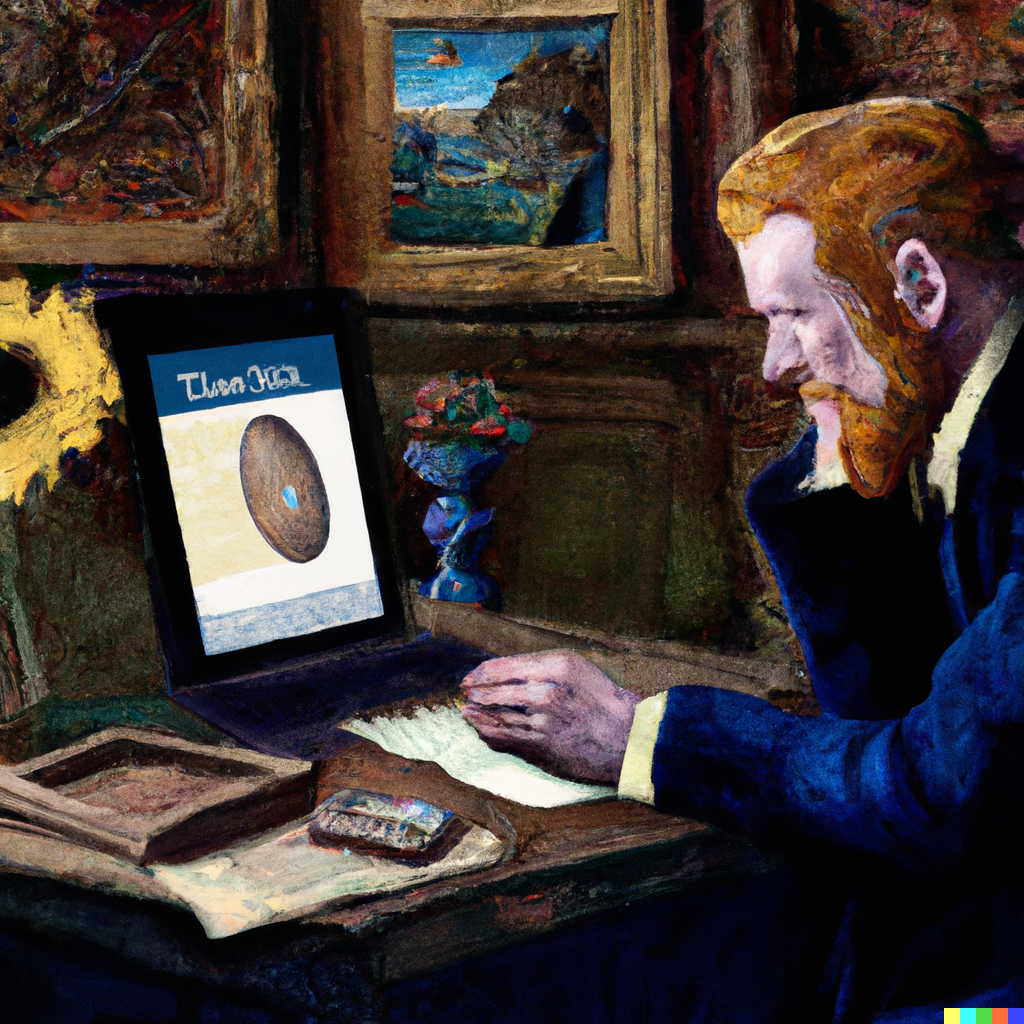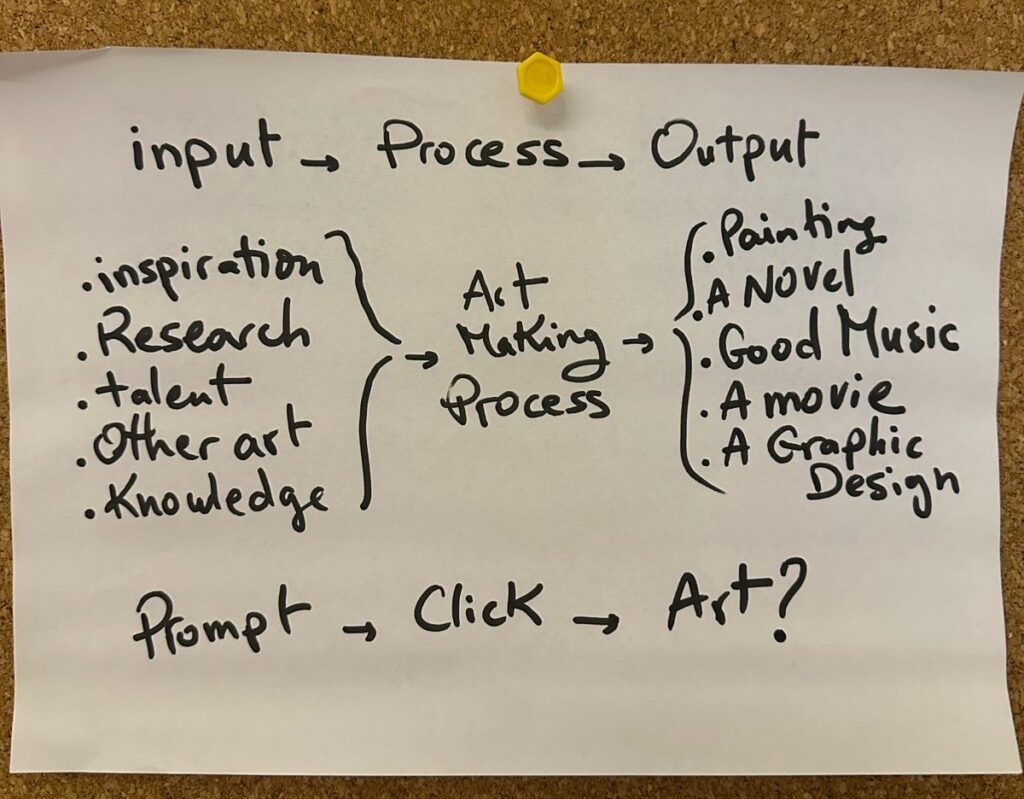I have had mixed opinions about creatives working with AI since the rise of Chatgpt, Midjourney, and Dall-E. I have also shared a significant number of blog posts where I tested AI art as well as creative work based on prompts. In this article, I want to tap into a side that has been bothering me about creatives working with AI.
Why is AI creative work becoming so popular?
At first, I was really intimidated by the fact that AI is now able to do creative work such as painting, writing, making music, making films, etc. But only a few weeks later, I felt the need to accept the change happening in the world and to figure out how I could use AI as part of my work as an artist too. However, I have realized something really important. I was falling into the trap of technology and fast-paced dopamine.

AI creative work is a shortcut that offers two things that weren’t offered with any technology before. The first is the appearance of cultural appreciation, and the second is the pretense of creation.
Using AI for creativity feels like real creativity. But is it really?
Being an artist who is used to a slower process of creating makes the use of AI in creative work feel unnatural, fake, and worrying. I am not against technology, but I am against attributing big value to the output of an input as simple as a click.
Creatives working with AI
With all due respect, how are people using AI to generate creative work daring to call themselves artists or creatives?
Who am I to judge?
But let me tell you something. AI is great and revolutionary because it allows people who cannot write to write and people who cannot draw to draw. Those who never knew the process of filmmaking are now making movies for others to watch and using digital platforms to educate the large public and manipulate the art-making scene.
Call me traditional if you want, but I will forever be extremely skeptical of any creative who describes themselves as “working with AI”. If you’re an artist who is solely “working with AI” then it suggests to me that you’re an artist who can’t really paint; if you’re a writer “working with AI,” I’ll assume you’re a writer who cannot write. It is the high point of internet fraudulism—an audacious assault on the creative spark that separates humans from the rest.
“Working with AI” is concerning
Creatives working with AI are actually working “for” AI. They are teaching these machines, giving them a bigger data set and, ultimately, the tools to further reduce human necessity.
Those creating and working with AI aren’t able to create and work with their own brains and hands. They are too lazy to put in the work required to reach mastery. Those are people running after the benefits of being creative in the eyes of the public, not after the love of the craft.
Many people nowadays would argue that even generating AI creative work requires “talent” or a vast understanding of algorithms and machine programming. However, does that make you a creative art maker? Are you really an artist? Or are you a tech enthusiast?
It is so concerning to me that we used to have to be good at something in order to be good at something. And now we find ways to avoid and shorten our paths to mastery.
Is art really worth making in 2023? Or is it time to give up on a lengthy and consuming art-making process that leads to what a click is leading to?

Conclusion
You choose for yourself, but if you call yourself creative after generating art with AI or take credit for working with AI, it is time to question your use of labels and reflect on the image that you have constructed for yourself. Enjoy creating with integrity <3
